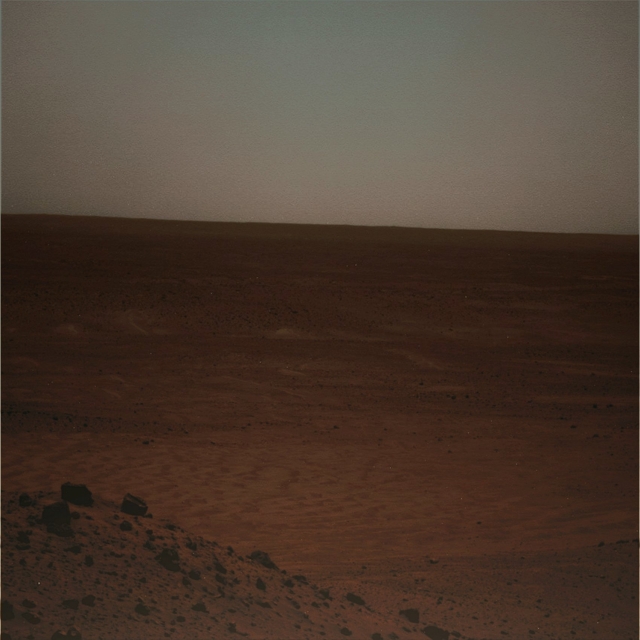
March 8, 2012
Credits: NASA/JPL/Cornell/USGS - MER Spirit - Credits for the additional process. and color.: Dr Paolo C. Fienga/Lunar Explorer Italia/IPF
|
Sometimes, the colorization that we make of the Original NASA - RAW b/w frames taken by the Mars Exploration Rovers (MER) Spirit and Opportunity turns out to be very easy. Almost "automatic" (and, as a matter of fact, the Original NASA colorizations are "automatic", meaning that the frames are just put through and processed by a software which does the job: no human "creative" or "interpretative" intervention is required). Some other times, instead, it is extremely difficult. Why? Because things change. On Earth, as well on Mars. Think about it: the same landscape, at different times of the day, changes. It changes its colors, its luminance, its shades and nuances and so forth. Things change: that's a fact and nothing can make this simple reality any different. In time, however, we, as IPF, have noticed one thing that left us a little bit surprised: even though the NASA colorizations of the pictures taken on Mars are supposed to be the perfect ones (well, maybe "perfect" is way too much; let's just say that they are supposed to be the "most reliable" ones), they seem to show Mars as if it never, ever, changed. Not even a bit. No matter which Orbiter (as far as the orbital frames are concerned), or what Lander or Rover (as far as the frames taken from the Surface are concerned) took the pictures, the NASA colorizations show Mars - with some EXTREMELY rare exception - always the same. Always immutable. Talking about the frames taken from the Surface of the Red Planet, it does not matter if the picture was taken in the morning, or in the afternoon, or late in the evening: it really doesn't. And it doesn't because the colors of the Surface are always the same. And the color of the Sky never changes either or, if it does, it then shows us vey dull and unlikely colors (usually a dark green or a thick and nuances-free yellow). Is that possible? Is this the truth? Probably it is, and not only because NASA is ALWAYS NASA (and we deeply respect the Pasadena Boys), but also because NASA has always and quite coherently shown us these colors for the past 35 years. Said that, since every Scientist and Researcher has (must have) their own ideas, we thought that, MAYBE, the NASA made "fully automatic colorization" does not always show us things exactly the way they are. And this is (one of the many reasons) why we have created the Absolute Natural Colorization: a technique that mixes together the original color data of each frame, the processing of two different softwares, and - last but not least - a "Human Touch": meaning an interpretation. Sometimes we are a little more "creative", some other times, instead, we tend to be more "pragmatic". And, according to which approach we use from time to time, the final result changes. But that's O.k., that's normal. Better yet: that is right! And it must be right because EVERYTHING CHANGES! Even Mars, and its beautiful REAL colors... This frame has been colorized in Absolute Natural Colors (such as the colors that a normal human eye would actually perceive if someone were on the Surface of Mars, near the NASA - Mars Exploration Rover Spirit, and then looked towards the Horizon), by using an original technique created - and, in time, dramatically improved - by the Lunar Explorer Italia Team
|
News visualized: 694 times

